Address
304 North Cardinal
St. Dorchester Center, MA 02124
Work Hours
Monday to Friday: 7AM - 7PM
Weekend: 10AM - 5PM
Address
304 North Cardinal
St. Dorchester Center, MA 02124
Work Hours
Monday to Friday: 7AM - 7PM
Weekend: 10AM - 5PM

In a world where culinary innovation meets environmental consciousness, the commercial air fryer has emerged as a beacon of change. This nifty kitchen gadget is not just a cooking appliance; it’s a trendsetter, reshaping the very essence of commercial cooking. Its rise is a testament to the evolving demands of the food industry, where efficiency, health, and sustainability are no longer just buzzwords but core principles. As we delve into the myriad benefits and future implications of commercial air fryers, it’s clear that this isn’t just a fleeting fad—it’s the future of food preparation.
The commercial kitchen landscape is undergoing a remarkable transformation, and at the forefront of this culinary revolution is the meteoric rise of air fryer factories. These innovative facilities are not just producing kitchen appliances; they are crafting the tools that are reshaping the way chefs and restaurateurs approach cooking.
Air fryers have long been a favorite in home kitchens for their ability to offer a healthier alternative to deep-frying. However, the introduction of commercial air fryer models has taken this concept to a whole new level. These industrial-grade appliances are designed to handle the demands of high-volume cooking, making them a must-have for busy kitchens.
The secret to the air fryer’s success lies in its ability to mimic the crispy texture of fried food without the excessive oil. By using a combination of hot air and a fan to circulate it, these fryers achieve a golden, crispy exterior while keeping the interior tender and juicy. This technology has not only won over food enthusiasts for its health benefits but also for its ability to reduce cooking times and energy consumption.
As more businesses recognize the value of these fryers, the demand for them has surged. This demand has led to the establishment of specialized air fryer factories, each striving to outdo the other in terms of design, efficiency, and innovation. These factories are not just manufacturing machines; they are creating solutions that streamline kitchen operations and enhance the overall dining experience.
One of the key factors driving the growth of air fryer factories is the health-conscious consumer. With the rise of dietary concerns and the increasing popularity of low-carb and low-fat diets, restaurants and cafes are looking for ways to offer their patrons healthier options without compromising on taste. Commercial air fryers provide the perfect solution, allowing establishments to serve fried foods that are significantly lower in calories and fat.
Moreover, these fryers are a testament to the ongoing shift towards sustainability in the foodservice industry. By reducing the amount of oil used, air fryers help to minimize waste and lower the environmental impact of food preparation. This eco-friendly approach is not only attracting environmentally conscious customers but also appealing to businesses looking to reduce their operational costs.
The innovation within air fryer factories is not limited to the cooking process. These factories are also at the cutting edge of technology, integrating smart features that allow for precise temperature control, automated cooking cycles, and even connectivity to kitchen management systems. This level of sophistication ensures that commercial air fryers are not just a tool but a part of a larger, more efficient kitchen ecosystem.
As the market for commercial air fryers continues to expand, so does the variety of products available. From countertop models suitable for smaller operations to large-scale industrial fryers capable of handling the output of bustling restaurants, there’s an air fryer for every need. These factories are not just producing a single product; they are offering a range of solutions that cater to diverse kitchen requirements.
In the competitive world of commercial kitchen equipment, air fryer factories are also focusing on the importance of after-sales service. With the knowledge that the performance of their fryers is crucial to the success of their customers’ businesses, these factories are investing in training programs for technicians and providing comprehensive support to ensure that fryers operate at peak efficiency.
The rise of air fryer factories is not just a trend; it’s a sign of the times. As the foodservice industry evolves, these factories are leading the charge in providing innovative, efficient, and sustainable cooking solutions. They are not just meeting the demands of today’s kitchens but are also preparing for the challenges and opportunities of tomorrow.
In conclusion, the rise of air fryer factories is a testament to the power of innovation and the changing landscape of commercial kitchens. By offering a healthier, more efficient, and environmentally friendly alternative to traditional frying methods, these factories are not just revolutionizing the way food is cooked but also the way businesses operate in the foodservice industry.

Commercial kitchens have been buzzing with excitement as the introduction of commercial air fryers has completely transformed the way we think about frying. These innovative appliances have emerged as a game-changer for several compelling reasons.
One of the most significant factors contributing to the surge in popularity of commercial air fryers is their ability to deliver healthier cooking options. Traditional frying methods often involve deep-fat cooking, which can lead to a high calorie and fat content in the final dish. In contrast, air fryers use hot air to circulate around the food, significantly reducing the amount of oil needed. This not only slashes the calorie count but also makes the food healthier and more suitable for those watching their weight or adhering to dietary restrictions.
Another key advantage is the efficiency and speed of commercial air fryers. These machines can cook food much faster than traditional methods, which is a crucial factor in high-volume commercial kitchens. Whether it’s frying a batch of chicken pieces or crispy French fries, air fryers can do the job in a fraction of the time, ensuring that orders are turned around quickly and consistently, which is essential for maintaining customer satisfaction.
The technology behind commercial air fryers has also advanced to include smart features that make them even more user-friendly. Modern units often come with digital controls, timers, and adjustable temperature settings, allowing chefs to tailor the cooking process to specific recipes and ingredients. This level of customization ensures that each dish is cooked to perfection, every time.
In terms of cost-effectiveness, commercial air fryers have proven to be a wise investment. Despite the initial higher price point compared to traditional fryers, they can save money in the long run. The reduced oil usage means lower maintenance costs and less frequent cleaning, as well as potential savings on health insurance due to the healthier menu options. Additionally, the energy efficiency of air fryers contributes to lower utility bills, making them a sustainable choice for businesses looking to reduce their environmental footprint.
The versatility of commercial air fryers cannot be overstated. They can handle a wide range of foods, from appetizers to desserts, all while maintaining the desired texture and flavor. From crispy onion rings to golden-brown cookies, these fryers can replicate the familiar taste and appearance of fried foods without the unhealthy drawbacks. This versatility has made them a favorite among fast-food chains, restaurants, and even schools and hospitals where healthy eating is a priority.
The convenience factor of commercial air fryers is another reason for their rise in popularity. They are compact and can be easily integrated into existing kitchen layouts. Unlike deep fryers that require a designated area for oil storage and disposal, air fryers can be placed on countertops or under shelves, freeing up valuable kitchen space. This ease of use and integration has made them a must-have for busy kitchens.
Safety is a major concern in commercial kitchens, and air fryers have addressed this with their design. These fryers do not require the use of hot oil, which significantly reduces the risk of kitchen fires and burns. The lack of oil also means fewer spills and messes, which can be a huge time-saver for cleaning crews.
Moreover, the portability of commercial air fryers is a feature that many businesses appreciate. They can be moved around easily, making them a great option for food trucks, catering services, or temporary events. This flexibility allows for a broader range of culinary offerings without the need for extensive infrastructure changes.
In summary, the buzz surrounding commercial air fryers is well-deserved. Their health benefits, efficiency, smart features, cost-effectiveness, versatility, convenience, safety, and portability have made them a must-have appliance in the commercial kitchen landscape. It’s no wonder that the demand for commercial air fryer factories is skyrocketing as businesses look to incorporate this innovative technology into their operations.
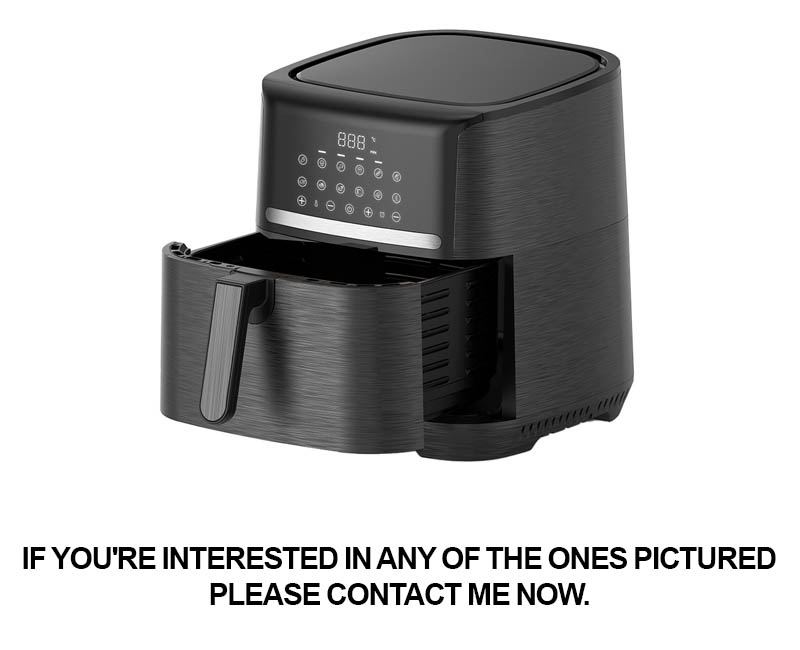
In the ever-evolving world of commercial kitchen appliances, air fryers have emerged not just as a trendy gadget but as a revolutionary cooking method that’s reshaping the industry. The latest commercial air fryers are a testament to innovative design and cutting-edge technology, promising to transform the way chefs and restaurateurs approach cooking. Let’s dive into the latest trends shaping the commercial air fryer market.
The first noticeable trend is the emphasis on compact and space-saving designs. Modern commercial air fryers are engineered to fit seamlessly into the limited space of professional kitchens. With sleek, slim profiles, these fryers save valuable counter space without compromising on capacity. This design aspect is particularly appealing to operators looking to maximize their kitchen’s efficiency.
Next, we see a surge in smart technology integration. Many of today’s commercial air fryers come equipped with digital controls and programmable settings, allowing chefs to set cooking times, temperatures, and even timers. This not only simplifies the cooking process but also ensures consistent results with minimal effort. The inclusion of touchscreens and LED displays adds a modern touch to the user interface, making it intuitive and user-friendly.
One cannot overlook the increasing focus on energy efficiency. As sustainability becomes a key concern for businesses, manufacturers are pushing the boundaries to create air fryers that consume less energy while still delivering high-performance cooking. These energy-efficient models not only reduce operational costs but also align with the broader goal of reducing the carbon footprint in commercial kitchens.
Safety features are also gaining prominence in the design of commercial air fryers. With features like automatic shut-off, cool-touch surfaces, and childproof locks, these fryers are not just about cooking but also about ensuring a secure environment for both staff and customers. The incorporation of safety interlocks that prevent operation when the fryer is open is a clear indicator of the industry’s commitment to safety standards.
The trend towards versatility is undeniable. Modern commercial air fryers are designed to handle a wide array of recipes, from crispy French fries to juicy fried chicken. Some models even come with additional accessories such as rotisseries or grilling elements, allowing for a diverse range of cooking techniques. This versatility is a game-changer for establishments that want to offer a variety of menu items without the need for multiple appliances.
Customization is another key trend in the design of commercial air fryers. Many manufacturers are offering models with adjustable cooking settings, allowing operators to fine-tune the cooking process to suit specific ingredients or desired outcomes. This level of control is particularly beneficial for establishments with a focus on specialized or gourmet dishes.
The use of high-quality materials is also a hallmark of the latest commercial air fryers. Durable stainless steel construction not only adds to the appliance’s longevity but also gives it a professional and hygienic appearance. These materials are easy to clean and maintain, which is crucial in a commercial kitchen setting where cleanliness is paramount.
Another interesting trend is the inclusion of self-cleaning functions. While this isn’t a new feature, the latest models are making it more accessible and efficient. Self-cleaning cycles help reduce the need for manual cleaning, saving time and effort for kitchen staff. This feature is especially appealing for busy kitchens where every second counts.
Lastly, the integration of wireless connectivity and remote monitoring capabilities is becoming more common. Chefs can now monitor and control their air fryers from their smartphones or tablets, ensuring that food is being cooked to perfection even when they’re away from the kitchen. This level of connectivity is a step towards a more connected and efficient kitchen environment.
In conclusion, the latest trends in commercial air fryer design are all about efficiency, safety, versatility, and sustainability. These fryers are not just cooking appliances; they are tools that are reshaping the commercial kitchen landscape, offering solutions that cater to the evolving needs of chefs and restaurateurs worldwide.
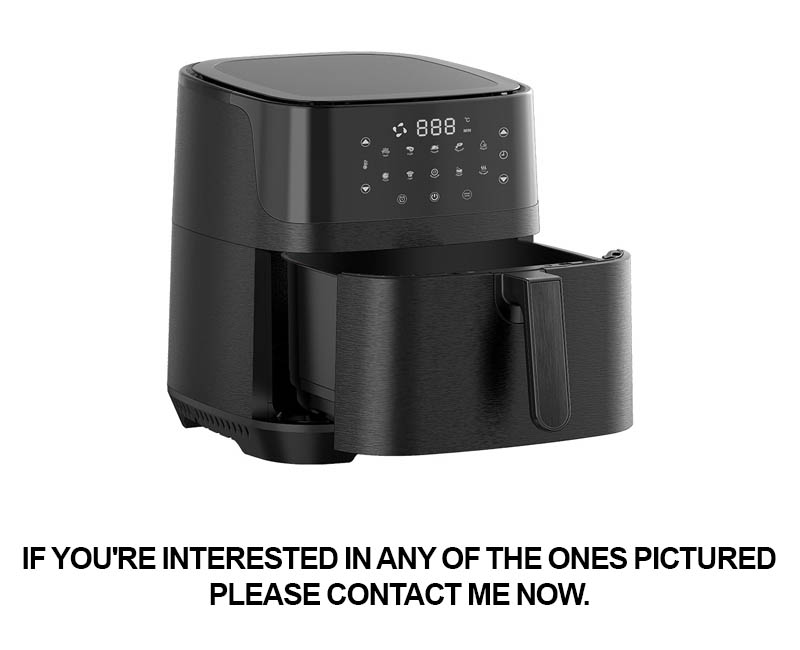
The surge in demand for commercial air fryer factories can be attributed to a multitude of factors, each contributing to a shift in the culinary landscape. From health-conscious consumers to the quest for operational efficiency, the reasons are as diverse as they are compelling.
Health Fads and Consumer PreferencesThe rise in popularity of healthier cooking methods has been a significant driver behind the demand for commercial air fryer factories. With a growing awareness of the health risks associated with deep-frying, consumers are gravitating towards air frying as a healthier alternative. This shift in consumer preference has led to a substantial increase in the demand for commercial kitchens equipped with air fryers.
Efficiency and Cost-EffectivenessCommercial air fryers are renowned for their energy efficiency. They use up to 80% less oil than traditional deep-frying methods, reducing both operational costs and waste. In an era where businesses are always looking to cut down on expenses, the cost-effectiveness of air fryers is a major draw. The initial investment may be higher than traditional fryers, but the long-term savings make them a wise choice for commercial operations.
Technology AdvancementsAdvancements in technology have made commercial air fryers more reliable and versatile than ever before. Modern air fryers come with programmable settings, allowing chefs to precisely control the cooking process. Features like adjustable temperature settings and timers have turned these appliances into multi-functional workhorses, capable of handling a variety of cooking tasks beyond just frying.
Sustainability InitiativesSustainability is no longer just a buzzword; it’s a critical factor for businesses looking to reduce their environmental footprint. Commercial air fryers are part of a broader movement towards sustainable cooking practices. By using less oil and reducing the need for hot ovens, these fryers help to conserve energy and minimize the carbon footprint associated with commercial cooking operations.
Menu Expansion OpportunitiesThe versatility of commercial air fryers has opened up new opportunities for menu development. Chefs and restaurateurs can now offer a wider range of fried dishes with a lighter, healthier twist. This has not only increased the appeal of the menu but has also allowed businesses to cater to a broader demographic, including those with dietary restrictions or preferences.
Increased Capacity and ProductivityCommercial air fryer factories are designed to handle high volumes, making them perfect for busy kitchens. These fryers can cook a larger batch of food at once, significantly increasing productivity without compromising on quality. For fast-casual and quick-service restaurants, this capability is invaluable, as it ensures they can keep up with customer demand without sacrificing speed.
Regulatory ComplianceHealth and safety regulations have become more stringent over the years, especially in the food industry. Commercial air fryers are often equipped with safety features that help establishments comply with these regulations. Features like automatic shut-off, non-stick coatings, and easy-to-clean surfaces make it easier for kitchens to maintain a clean and safe working environment.
Competitive EdgeIn a competitive market, the ability to offer unique, health-conscious options can give a business a significant edge. Commercial air fryer factories enable restaurants to differentiate themselves by offering a variety of air-fried snacks and dishes that stand out from the deep-fried fare typically found in their competition.
The integration of commercial air fryer factories into the culinary landscape is a testament to the evolving demands of the market. As consumers seek healthier options and businesses aim to operate more sustainably and efficiently, the demand for these fryers continues to soar. The future looks bright for commercial air fryer factories, as they become an indispensable part of the modern kitchen.
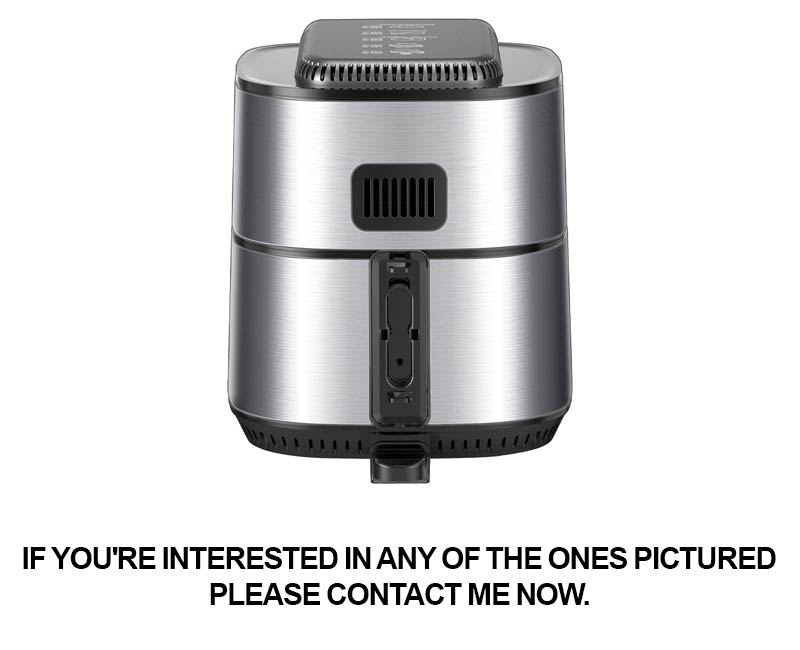
Commercial air fryers have not only transformed the way we cook at home but have also made a significant impact on the commercial kitchen scene. These innovative appliances are not just a trend; they represent a shift towards efficiency and sustainability. Let’s delve into the green side of commercial air fryers and why they are becoming a staple in the industry.
The Energy Efficiency EdgeCommercial air fryers are designed to use significantly less energy than traditional deep fryers. By utilizing rapid air circulation, these fryers can achieve the same crispy texture as deep-fried foods while using up to 80% less oil. This reduction in energy consumption not only lowers operational costs for businesses but also reduces the carbon footprint associated with commercial cooking.
Reduced Oil Usage and Health BenefitsOne of the most notable advantages of commercial air fryers is their ability to cook with minimal oil. This is a game-changer for health-conscious consumers and businesses looking to offer healthier menu options. The use of less oil means lower fat content in the food, which can lead to healthier choices for customers and a positive image for the establishment.
Sustainable Cooking PracticesThe environmental impact of cooking methods is a growing concern for many businesses. Commercial air fryers align with sustainable practices by reducing the need for oil and minimizing waste. The fryers can be used to cook a variety of foods, from French fries to chicken wings, without the mess and waste typically associated with deep-frying. This shift towards more sustainable cooking methods is a significant step forward for the foodservice industry.
Longevity and Low MaintenanceAnother aspect that contributes to the green side of commercial air fryers is their durability and low maintenance requirements. These fryers are built to withstand heavy use, which means they can last longer than traditional fryers, reducing the frequency of replacements and the subsequent waste. Additionally, their design often includes features that make cleaning easier, further reducing water and chemical usage.
Smart Technology IntegrationModern commercial air fryers are often equipped with smart technology that allows for precise temperature control and cooking times. This not only ensures consistent results but also helps operators to fine-tune their cooking processes to maximize efficiency. By optimizing the cooking process, these fryers can reduce energy use and minimize food waste, both of which are critical to sustainability efforts.
Health and Safety StandardsThe use of commercial air fryers also addresses health and safety concerns. With less oil, there’s a reduced risk of oil fires and the associated hazards. Moreover, the clean cooking environment helps prevent cross-contamination, which is essential in maintaining high food safety standards.
Cost Savings Over TimeWhile the initial investment in a commercial air fryer may be higher than that of a traditional fryer, the long-term cost savings can be substantial. The reduced energy consumption, lower maintenance needs, and extended lifespan of these fryers can lead to significant savings over the years. These savings can be reinvested into the business, or used to offset the higher upfront cost.
Consumer Preference ShiftConsumer preferences are shifting towards healthier eating habits, and commercial air fryers are perfectly positioned to meet this demand. As more customers seek out healthier food options, businesses that adopt air fryers can attract a wider customer base and potentially increase their revenue. This preference for healthier cooking methods is driving the demand for commercial air fryer factories, which are meeting the industry’s need for these efficient and sustainable appliances.
The Future of Sustainable CookingThe rise of commercial air fryers is a testament to the foodservice industry’s commitment to sustainability. As technology continues to evolve, we can expect to see even more innovative designs that further enhance energy efficiency, reduce waste, and promote healthier cooking practices. The green side of commercial air fryers is not just a trend; it’s a glimpse into the future of sustainable and responsible cooking in commercial kitchens.
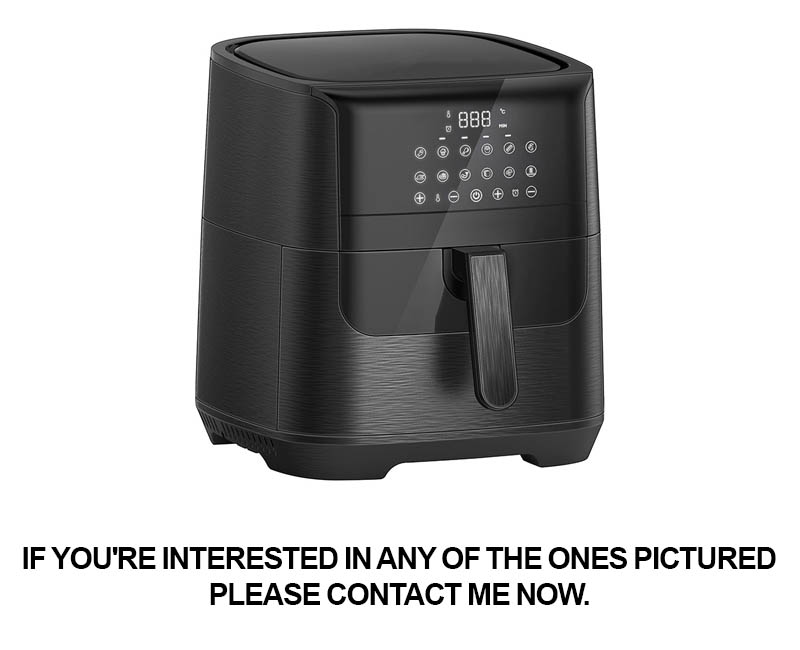
In the bustling world of commercial kitchens, the integration of air fryer solutions has become a beacon of innovation and efficiency. Let’s delve into some case studies that showcase the successful implementations of these cutting-edge appliances.
At a popular fast-casual chain, the introduction of commercial air fryers has transformed the way they prepare their signature fried foods. By reducing oil usage by up to 80%, these fryers have not only cut down on operational costs but have also improved the health profile of their menu items, attracting a wider customer base.
A local bakery has seen a remarkable boost in productivity with the installation of commercial air fryers. These units have allowed the bakery to offer a variety of crispy, oven-baked goods that mimic the texture of deep-fried items, all while maintaining a lighter, healthier product. The bakery’s customers have embraced the new offerings, leading to increased sales and a positive brand image.
A sports stadium, known for its high-energy atmosphere, turned to commercial air fryers to cater to the health-conscious crowd. The stadium’s food vendors have been able to provide a range of delicious, low-fat snacks that are just as satisfying as their traditional fried counterparts. The feedback from fans has been overwhelmingly positive, and the stadium has seen a surge in food sales during events.
A healthcare facility implemented commercial air fryers in their cafeteria to provide patients and staff with nutritious, yet tasty, meal options. The fryers have enabled the cafeteria to offer a diverse menu that includes everything from crispy vegetables to air-fried chicken, all with minimal oil. The result has been a healthier dining environment and improved patient satisfaction.
A school district has replaced traditional fryers with commercial air fryers in their school cafeterias. The switch has been met with enthusiasm from students and staff alike, who appreciate the reduced greasiness of the food. Additionally, the school district has seen a decrease in maintenance costs and an increase in energy efficiency, making the air fryers a sustainable choice for their facilities.
A gourmet restaurant has integrated commercial air fryers into their kitchen to offer unique, gourmet dishes. Chefs have found that the air fryers provide a perfect balance of crispiness and texture, allowing them to experiment with different cooking techniques and ingredients. The result is a menu that is both health-conscious and indulgent, pleasing both critics and diners.
A hotel’s banquet department has embraced commercial air fryers to serve a variety of dishes at large-scale events. The fryers’ compact size and efficient cooking capabilities have made them an ideal choice for preparing appetizers and side dishes in large quantities. This has not only increased the department’s operational efficiency but has also allowed them to offer a wider range of options to their clients.
A food truck operator has swapped out their deep fryers for commercial air fryers to meet the growing demand for healthier street food. The fryers have allowed the operator to offer fried snacks with a fraction of the oil, making them more appealing to health-conscious customers. The food truck’s reputation for quality and innovation has grown, leading to increased foot traffic and sales.
These case studies highlight the versatility and benefits of commercial air fryer solutions. From fast-food chains to gourmet restaurants, these appliances are revolutionizing the way we think about frying, offering a greener, more efficient, and healthier approach to cooking.
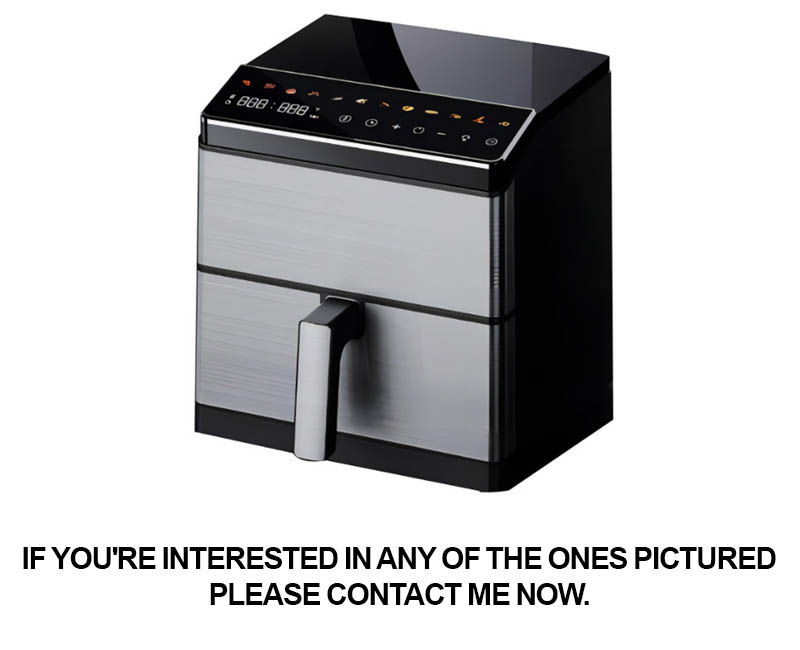
Commercial air fryers have become a staple in the culinary world, offering numerous benefits to businesses looking to enhance their operations. Here’s a closer look at the advantages that these innovative appliances bring to the table:
The Versatility of Commercial Air FryersBusinesses can expect a high degree of versatility from commercial air fryers. These units are not just limited to frying, but they can also bake, roast, and even grill. This multipurpose functionality allows restaurants and commercial kitchens to diversify their menu offerings without the need for multiple appliances, thereby saving space and reducing energy consumption.
Healthier Cooking OptionsOne of the standout benefits of commercial air fryers is their ability to offer healthier cooking options. Traditional frying methods often involve submerging food in oil, leading to high calorie content and potential health risks. Air fryers, on the other hand, use a fraction of the oil, resulting in food that’s lower in fat and calories. This feature is particularly appealing to health-conscious consumers and can give businesses a competitive edge in the market.
Consistent and Even CookingCommercial air fryers are designed to ensure consistent and even cooking. The even distribution of hot air around the food eliminates cold spots and undercooked areas, which is a common issue with traditional frying methods. This consistency not only improves the quality of the final product but also reduces waste, as there’s less likelihood of overcooking or burning.
Reduced Energy ConsumptionEnergy efficiency is a crucial factor for businesses, especially those operating on tight budgets. Commercial air fryers consume significantly less energy compared to traditional fryers. They heat up quickly and maintain a steady temperature, leading to lower energy bills and a smaller carbon footprint. This sustainability aspect is increasingly important for businesses looking to appeal to eco-friendly customers.
Increased Capacity and SpeedCommercial air fryers are built to handle high volumes of food, making them ideal for busy kitchens. They often come with large capacities, allowing for the cooking of large batches of food at once. This speed and capacity are particularly beneficial for fast-food restaurants, catering services, and institutions where time is of the essence.
Cost-Effective MaintenanceThe maintenance of commercial air fryers is relatively straightforward and cost-effective. These units are designed to be durable and easy to clean, with non-stick surfaces that reduce the need for harsh chemicals. This not only saves on cleaning costs but also extends the lifespan of the appliance.
Enhanced Menu VarietyThe ability to cook a wide range of foods in an air fryer opens up new possibilities for businesses to create diverse menus. From crispy French fries to golden-brown chicken wings, the options are virtually limitless. This flexibility can attract a broader customer base and keep them coming back for more.
Improved Food Retention of NutrientsCooking with air fryers can help retain more nutrients in the food compared to traditional frying methods. The lower temperatures and shorter cooking times can preserve vitamins and minerals, making the food healthier and more nutritious.
Customizable Settings for Personalized CookingMany commercial air fryers come with adjustable settings that allow for personalized cooking experiences. Users can control the temperature and cooking time to achieve the perfect texture and flavor for different types of food. This level of control is especially valuable for chefs who want to ensure consistency across their menu items.
Enhanced Customer SatisfactionThe health benefits and quality of food cooked in commercial air fryers often lead to higher customer satisfaction. As people become more health-conscious, they are looking for dining options that align with their lifestyle choices. By offering these healthier alternatives, businesses can build a loyal customer base.
In conclusion, the benefits of commercial air fryers are multifaceted, ranging from health and environmental advantages to cost savings and operational efficiencies. For businesses looking to stay ahead in the competitive culinary landscape, investing in commercial air fryers is a strategic move that can yield significant returns.
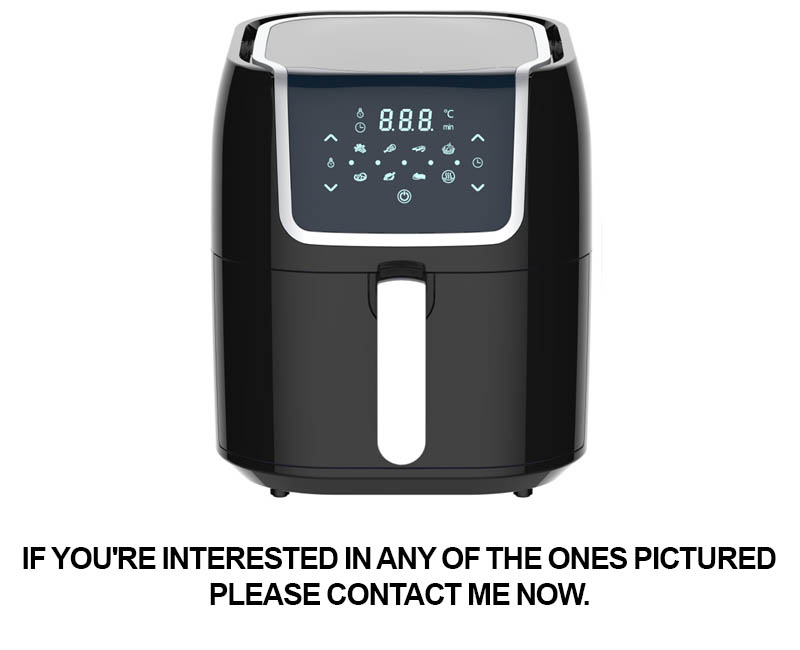
The landscape of commercial cooking is undergoing a remarkable transformation, and at the heart of this change are air fryer factories. These innovative manufacturing hubs are not just producing appliances; they are redefining the very essence of commercial cooking. Here’s a glimpse into how these factories are shaping the future:
In the world of commercial air fryer factories, there’s a relentless pursuit of efficiency. These facilities are dedicated to creating appliances that save time, reduce energy consumption, and streamline the cooking process. The result is a suite of air fryers that cater to the fast-paced demands of modern kitchens.
These factories are not just about producing air fryers; they’re engineering them with precision. Advanced heat distribution systems ensure that every fry is perfectly golden without the need for excessive oil. This not only improves the quality of the food but also cuts down on costs, making the operation of commercial kitchens more sustainable.
The sleek designs of these air fryers are not just aesthetic; they’re functional. Commercial air fryer factories understand that kitchens are bustling environments where space is at a premium. Their products are compact yet powerful, allowing businesses to maximize their operational space while maintaining high productivity levels.
Safety is a paramount concern in the commercial kitchen, and air fryer factories have addressed this with cutting-edge features. The incorporation of automatic shut-off systems, non-slip bases, and cool-touch exteriors ensures that kitchens remain safe for both staff and customers. These safety measures are not just a legal necessity but also a testament to the factories’ commitment to quality.
One of the most significant impacts of air fryer factories on the commercial cooking landscape is the shift towards healthier options. These factories are not just about replacing traditional frying methods but are also encouraging healthier cooking habits. With their ability to achieve crispy textures with minimal oil, air fryers are making it possible for businesses to offer meals that are both delicious and nutritious.
The demand for customized solutions is on the rise, and air fryer factories are responding by offering a range of units tailored to specific business needs. From countertop models to large-scale industrial fryers, these factories provide options that can fit any kitchen layout. Customization extends beyond size and capacity, with some factories even offering features like variable temperature controls to cater to diverse menu items.
In the realm of sustainability, air fryer factories are leading the charge. By reducing the amount of oil needed for cooking, these appliances are not only healthier but also more environmentally friendly. The energy efficiency of air fryers is another green advantage, as they consume less electricity compared to traditional fryers. This shift is not just good for the planet; it’s also a smart business decision in the long term.
As technology advances, so does the sophistication of air fryers. Smart fryers equipped with IoT capabilities are becoming increasingly popular. These devices can be monitored and controlled remotely, offering kitchen managers unprecedented control over their cooking process. The integration of smart technology into commercial air fryers is not just a convenience; it’s a game-changer for the industry.
Air fryer factories are also recognizing the importance of training and support. They understand that for their appliances to be effective, staff need to be properly trained. As such, many factories offer comprehensive training programs and ongoing support to ensure that businesses get the most out of their air fryers.
The future of commercial cooking is being shaped by the relentless innovation of air fryer factories. Their commitment to efficiency, safety, health, sustainability, and customer satisfaction is setting the stage for a new era in the foodservice industry. From the smallest café to the largest restaurant chain, the impact of these factories is undeniable. They are not just manufacturing appliances; they are crafting the future of how we cook, serve, and enjoy food.
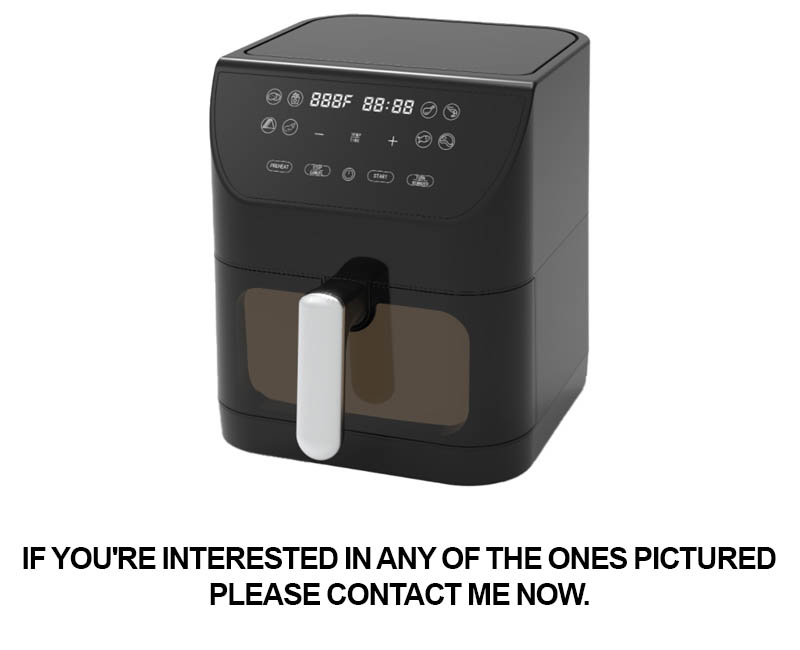
Understanding the capabilities and features of commercial air fryers is crucial for any business looking to enhance its kitchen operations. Here’s a detailed look at what businesses can expect from these modern cooking appliances:
The sleek, modern design of commercial air fryers is not just for aesthetics; it’s a practical choice for kitchen spaces. These fryers often come with compact, space-saving profiles that are perfect for bustling kitchens where every inch counts. Their streamlined look also makes them a visually appealing addition to any commercial kitchen setting.
With health concerns on the rise, commercial air fryers have become a favorite among establishments aiming to offer customers healthier options. These fryers use a fraction of the oil compared to traditional deep fryers, significantly reducing the calorie content of fried foods. This feature is particularly appealing to restaurants and cafes looking to cater to health-conscious diners.
The technology behind commercial air fryers is a game-changer. They utilize rapid air technology to circulate hot air around the food, creating a crispy outer layer while cooking it from the inside. This method not only reduces oil usage but also shortens cooking times, allowing kitchens to serve more quickly without compromising on quality.
Ease of use is another standout feature of commercial air fryers. Many models come with intuitive interfaces, including digital controls and programmable settings. This means chefs can easily adjust temperatures and cooking times to achieve the perfect texture and taste for a variety of fried foods. Additionally, these fryers often come with removable baskets and drip trays, making cleaning a breeze.
In terms of energy efficiency, commercial air fryers are a step ahead of traditional fryers. They consume less electricity due to their ability to cook food at higher temperatures in shorter periods. This not only saves on energy costs but also contributes to a more sustainable kitchen operation.
Commercial air fryers are versatile and can handle a wide range of foods, from French fries and chicken wings to fish and vegetables. This versatility is invaluable for businesses that want to offer a diverse menu without the need for multiple cooking appliances.
Safety is a top priority in commercial kitchens, and air fryers address this concern with their cool-to-the-touch exteriors. Unlike deep fryers, which can become dangerously hot, air fryers maintain a safer operating environment, reducing the risk of kitchen fires and burns.
For businesses looking to make a sustainable impact, commercial air fryers are a smart choice. They contribute to a greener kitchen by reducing oil waste and energy consumption. This is especially important for establishments aiming to achieve environmental certifications or simply looking to minimize their carbon footprint.
Investing in a commercial air fryer is a strategic move for businesses that want to stay competitive. These fryers are becoming standard equipment in kitchens worldwide, and having them on board can set a business apart from competitors who still rely on traditional deep fryers.
Regular maintenance is key to extending the lifespan of a commercial air fryer. By following the manufacturer’s guidelines for cleaning and care, businesses can ensure their fryers operate at peak performance for years to come.
When considering the cost of a commercial air fryer, it’s important to look beyond the initial purchase price. These fryers often have a lower total cost of ownership compared to traditional fryers due to their energy efficiency and reduced maintenance needs.
In conclusion, commercial air fryers offer a multitude of benefits that can enhance the operations of any business. From health and safety advantages to cost savings and environmental benefits, these fryers are shaping the future of commercial cooking. Businesses that embrace this technology are not only catering to current trends but also preparing for a sustainable and efficient future.
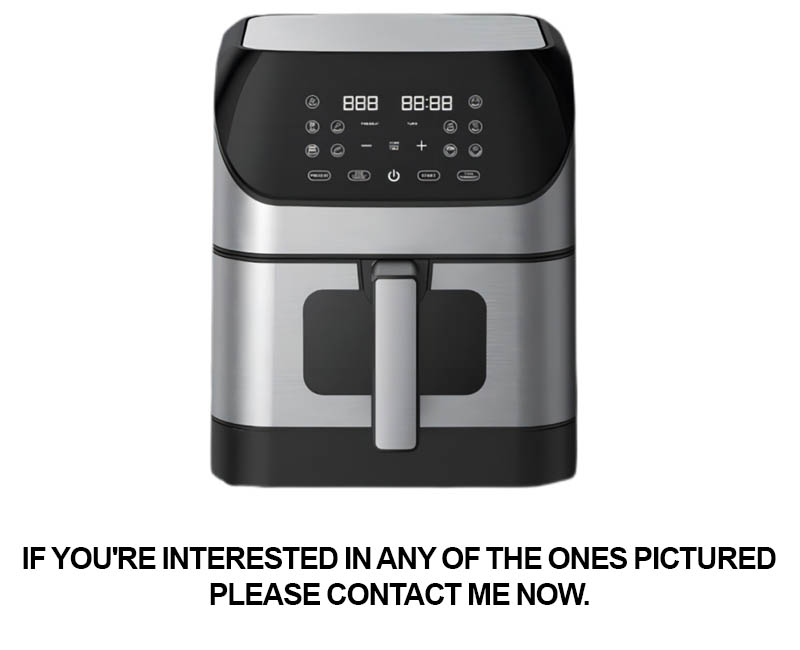
The commercial air fryer market’s meteoric rise is a testament to innovation and consumer demand. As the market expands, so does the need for informed decision-making by buyers. Here’s a closer look at the factors that are driving this growth and what it means for the future of the industry.
In recent years, there has been a significant shift in the culinary landscape, with a growing emphasis on healthier cooking methods. This shift has been particularly pronounced in the commercial sector, where operators are constantly seeking ways to offer patrons a variety of dishes that cater to diverse dietary preferences and health concerns. Air fryers have emerged as a star player in this revolution, offering a solution that promises to satisfy both health-conscious consumers and those who enjoy the taste of fried food without the guilt.
The allure of air fryers lies in their ability to produce crispy, golden-brown results with a fraction of the oil typically used in traditional frying methods. This technological advancement has not only captured the interest of health nuts but has also piqued the curiosity of chefs and restaurant owners looking to enhance their menus and streamline their operations.
One of the key factors fueling the demand for commercial air fryer factories is the cost-effectiveness of these appliances. By reducing the amount of oil required, businesses can cut down on their operational costs, a significant consideration for any commercial kitchen. Additionally, the energy efficiency of air fryers has made them an environmentally friendly choice, appealing to the eco-conscious market segment.
The versatility of commercial air fryers is another driving force behind their popularity. These units can be used to prepare a wide array of dishes, from crispy French fries and chicken wings to seafood and vegetables. This flexibility allows chefs to diversify their offerings without the need for multiple specialized fryers, which can save space and reduce the complexity of the kitchen layout.
Case studies from various industries highlight the success of commercial air fryer implementations. For instance, a fast-food chain replaced its deep fryers with commercial air fryers, leading to a 30% decrease in oil usage and a 20% reduction in energy consumption. The result was not only a significant cost savings but also a more sustainable operation that customers appreciated.
For businesses, the benefits of adopting commercial air fryers are manifold. They include:
Looking ahead, the future of commercial cooking is poised to be shaped by the continued advancements in air fryer technology. Innovations such as programmable settings, larger capacities, and more integrated cooking functions are expected to further enhance the appeal of these appliances.
For prospective buyers, navigating the commercial air fryer industry requires careful consideration of several factors:
In conclusion, the unstoppable growth of the commercial air fryer market is a clear indicator of a trend that is here to stay. As the demand for healthier, cost-effective, and versatile cooking solutions continues to rise, the commercial air fryer stands as a beacon of innovation in the culinary world. For businesses looking to stay ahead of the curve, embracing this technology is not just a strategic move—it’s a necessity in an ever-evolving industry.